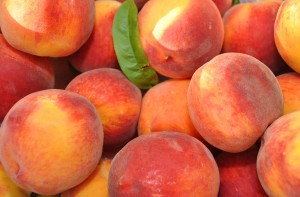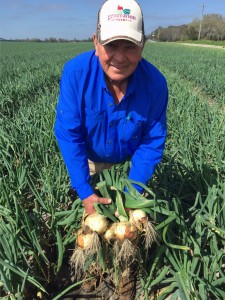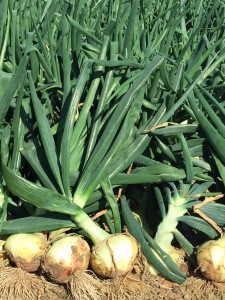 Kemp McLeod has been named South Carolina Farmer of the Year. He now joins nine finalists throughout the state, all hoping for the distinguished Southeastern Farmer of the Year.
Kemp McLeod has been named South Carolina Farmer of the Year. He now joins nine finalists throughout the state, all hoping for the distinguished Southeastern Farmer of the Year.
Should that happen, McLeod would be one of only three South Carolina winners in the 28 years the award has been presented. For winning at the state level McLeod, a longtime peach farmer from McBee, will receive cash, prizes and an expenses-paid trip to the Sunbelt Expo farm show in Moultrie, Ga., where the Southeastern Farmer of the Year Award will be given on Oct. 17.
Tony Melton, a Clemson Extension horticulture agent in South Carolina’s Pee Dee region, nominated Kemp for the award sponsored by Swisher Sweets and the Sunbelt Expo. “He is the best farmer I know,” said Melton, who worked for McLeod Farms in his youth and used money he earned there to attend Clemson University.
 Years later, The McLeods honored Melton by funding a Clemson scholarship in his name.
Years later, The McLeods honored Melton by funding a Clemson scholarship in his name.
Previous state honors given to McLeod include the John W. Parris Agriculture Leadership Award, the Order of the Palmetto in recognition as a Century Farm for operating more than 100 years, and an honorary state future Farmers of America degree.
Although peaches are their No. 1 crop, McLeod Farms — voted South Carolina Farm of the Year in 2011 — doesn’t stop there. They have a sizeable business in corn, wheat, rye and soybeans and a retail store that is a favorite stop for folks headed to and from South Carolina’s beaches. They also grow strawberries, blueberries, blackberries, red potatoes, cabbage, sweet corn, squash, onions, bell peppers, okra, tomatoes, peas, pumpkins, turnips, egg plants and other produce that’s sold at their roadside markets.
Read more about the 2017 S.C. Farmer of the Year Award
Related Articles:
McLeod Farms Celebrates 100th Anniversary





 Sweet news, folks. Suwannee onions from the fields of Lee County, Florida have arrived, and it looks like we’re in for a huge crop. They’re the first set of sweets to ship from Generation Farms. Vidalias begin shipping in late April.
Sweet news, folks. Suwannee onions from the fields of Lee County, Florida have arrived, and it looks like we’re in for a huge crop. They’re the first set of sweets to ship from Generation Farms. Vidalias begin shipping in late April. TIP:
TIP: For long-term storage, sweet onions can be frozen, but because their texture changes they should be used only for cooking. Chop the onions and place them on a cookie sheet, directly into the freezer. When frozen, store the onions in plastic bags or freezer containers. If you prefer whole onions, peel, wash, core and freeze in plastic bags.
For long-term storage, sweet onions can be frozen, but because their texture changes they should be used only for cooking. Chop the onions and place them on a cookie sheet, directly into the freezer. When frozen, store the onions in plastic bags or freezer containers. If you prefer whole onions, peel, wash, core and freeze in plastic bags.